A Short Trip into the Past
Architecture! I don't know if it is included in the seven wonders of the world, but it should be. We like to travel, we like to discover new places and to visit cities, historical objectives and other constructions and monuments in the world. Of course, we do this because we like it, but many times we don't realize that architecture is what attracts us the most.
Many years ago, when I was a teenager and I had to decide what I wanted to do in this life, architecture and fine arts were my choices. Because I had some drawing talent, certified in high school and that was the recommendation of my teachers. I didn't follow one or the other. Now I'm sorry, but it's much, much too late.
I made this little confession and reference to myself because I want to say that I am not an architecture specialist, I am not a practitioner (but I have many architect friends). I am just an amateur of architecture, architecture completed in the form of buildings. Everything I will publish in this community will be related to what I saw and liked, amateur remarks, an amateur who loves beauty.
Village Museum in Bucharest, Romania.
Romania is a relatively small country in Eastern Europe, some call it a beautiful country, others exaggerate it and others are not too happy with what they see. Absolutely normal. I like this country, I try to ignore the uncivilized parts (that is, many of the inhabitants) and I am in love with many others who are people you would like to meet. Nature is very diverse and the architecture, because it interests us now, is interesting, especially the old one ... and the relatively new one is quite controversial. Enough to give birth to the desire to be seen.
Now I want to show the archaic and naive architecture, the architecture of the old Romanian village. Pretty primitive. It is also an advantage here, you can see things that do not exist in another part of the world, especially in the western world. In this Balkan and Eastern European part the architecture of the villages is quite similar, but each with its own characteristics.
In order to be able to exemplify with images, I paid a visit to the Village Museum in Bucharest. A museum where houses brought from all regions of the country are exhibited, old houses, built only according to the criteria of personal needs of their inhabitants. Original constructions, not influenced by foreign architecture, constructions specific to some areas and communities.
The "Dimitrie Gusti" National Village Museum in Bucharest, Romania is the "Museum in the heart of the capital", which opened its doors to the public in 1936. The permanent exhibition covers an area of 14 ha with 380 monuments, 60,000 objects in the heritage of the collection, and over 250,000 archival documents related to the village and its traditional life. Permanent and temporary exhibitions attract 500,000 visitors annually. The Village Museum is the most visited cultural objective in Romania, open every day of the week and a Romanian and European BRAND that inspires confidence.
Source
I will present to you some constructions from different parts of the country. I start with the northern part, with two historical regions, Maramures and Bucovina. These regions are special primarily for the relief of hills and mountains, for the fact that they are somewhat isolated and therefore the tradition and way of life of the past have been preserved here.
I start with Maramures ...
It is one of the most interesting regions in Romania. The people who live here are very hardworking, strong and keep to the highest degree the old traditions of the archaic village, from the clothes to the construction of houses.
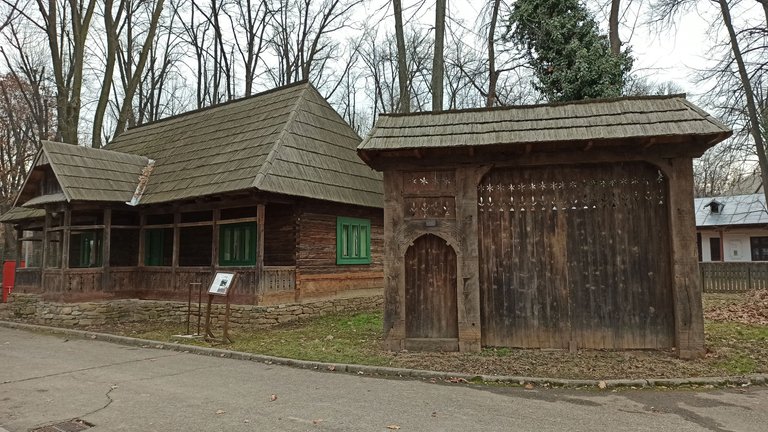
Due to the relief, there are huge forests in this region, so wood is the main building material. As you can see in the picture, the house is built entirely of wood, from the roof, walls, and to the fence and gate. Only the foundation is made of stone, another construction material found in the area.

This house is relatively new, a little over 70 years old.
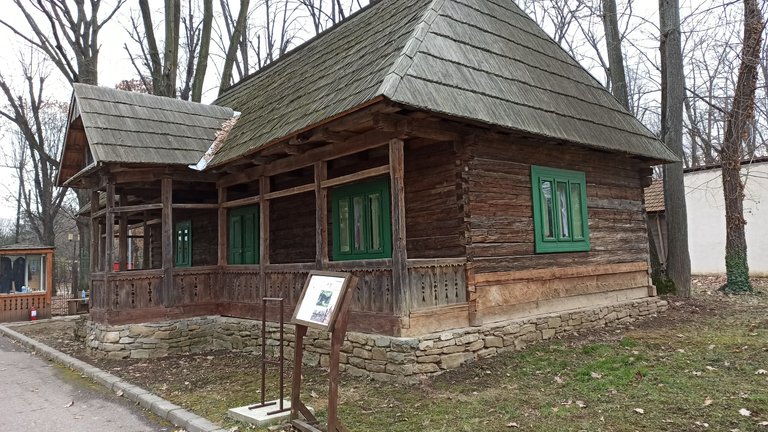
It should be noted both the high degree of woodworking, the skill of craftsmen, and the desire to beautify with drawings and woodcuts.
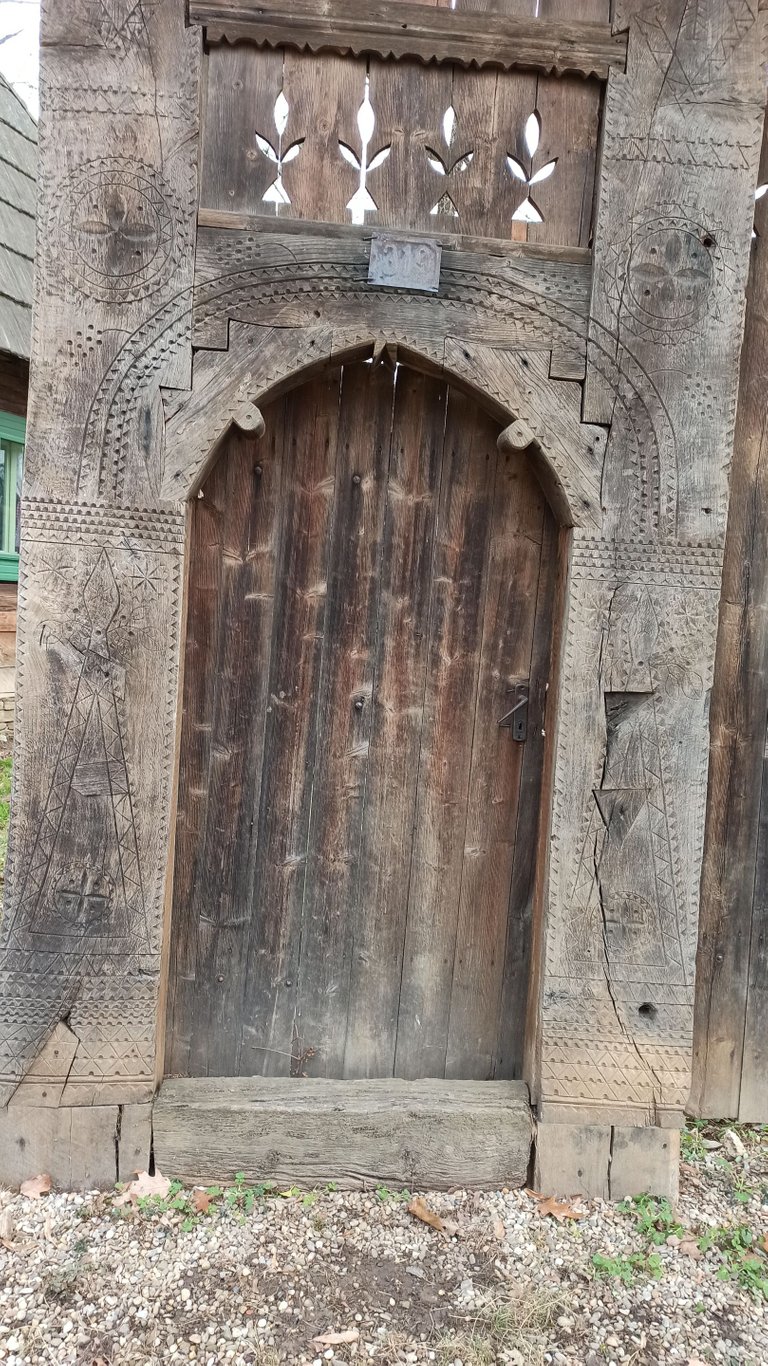
The drawn models are certainly passed down from generation to generation, probably coming from the time of the Dacian ancestors.
Bucovina
Bucovina means the land of beeches! Here it is a little different than in Maramures. If Maramures was a free and uninfluenced land since antiquity, during the time of the Roman, Dacian ancestors, Bucovina was a duchy within the Austro-Hungarian Empire for several hundred years. The Austro-Hungarian Empire, more advanced in culture and civilization than the Romanian side, greatly influenced this region.
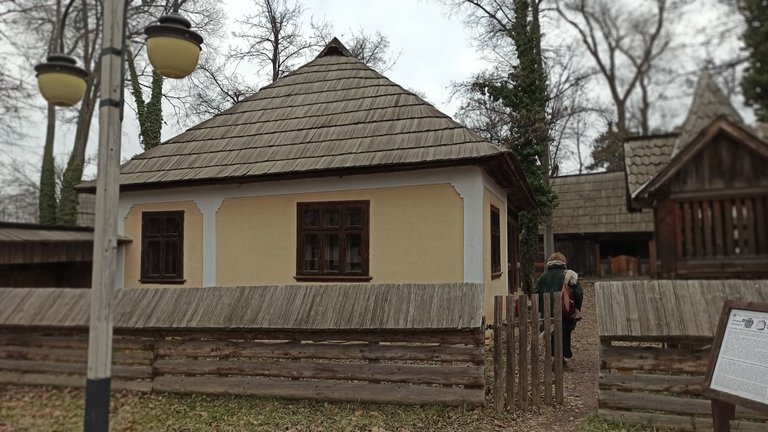
I was born in Bucovina and grew up there but on an edge, full of hills but with fewer forests (meaning the forests were about 10 km away). Because of this, the sight of this house reminds me of my childhood memories because in some places it resembles my grandparents' house.
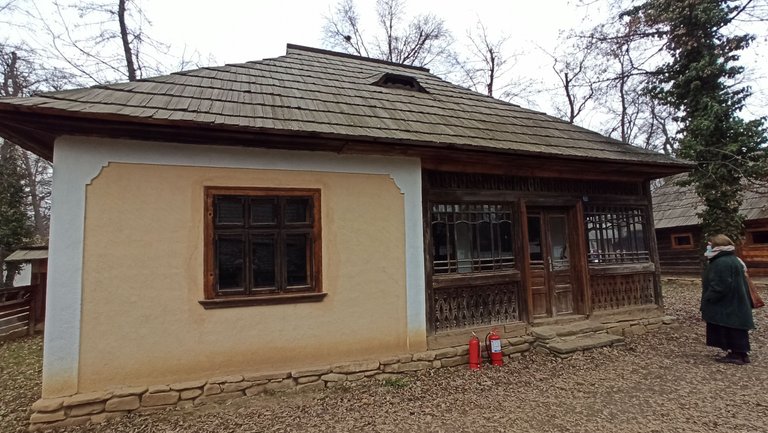
Although this house is older, from the end of the nineteenth century, there is a change in the way of construction. The house is also built of wood and has a stone foundation, as in Maramures, but, instead, there are improvements to the wall insulation, which is now plastered.
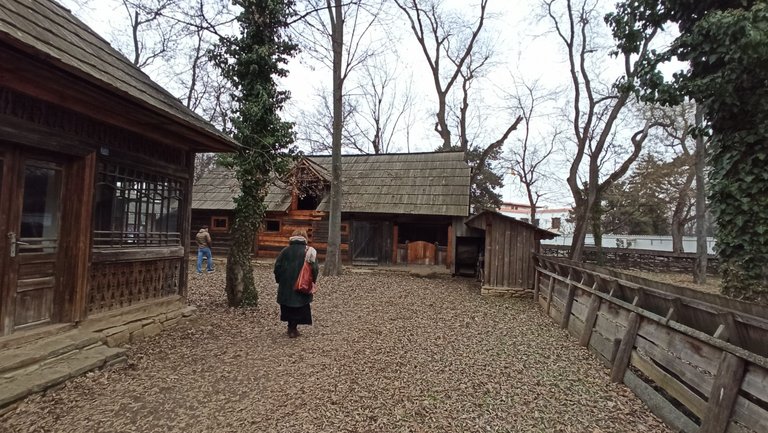
This house belonged to Hutus, a population that raised animals ... horses, cows, sheep. These houses were built on wooded, isolated hills and because of this, they were fenced around, especially for protection against wild animals.

Specific for raising and housing animals as well as fodder were these wooden constructions called "sure". On the sides of this construction, there were niches where means of transport and various equipment used in the household were kept.
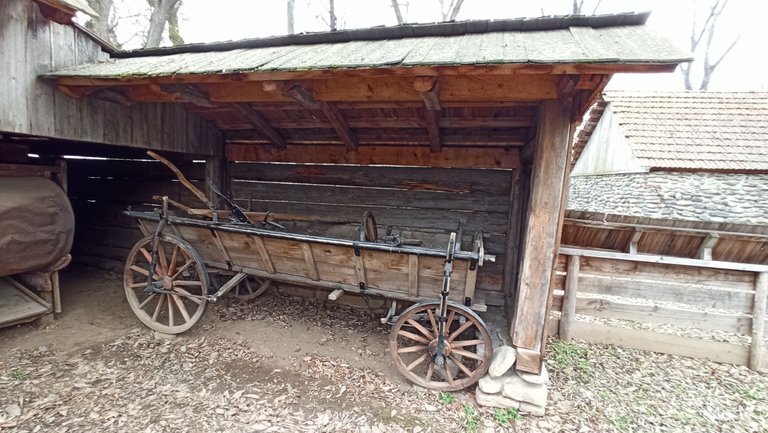
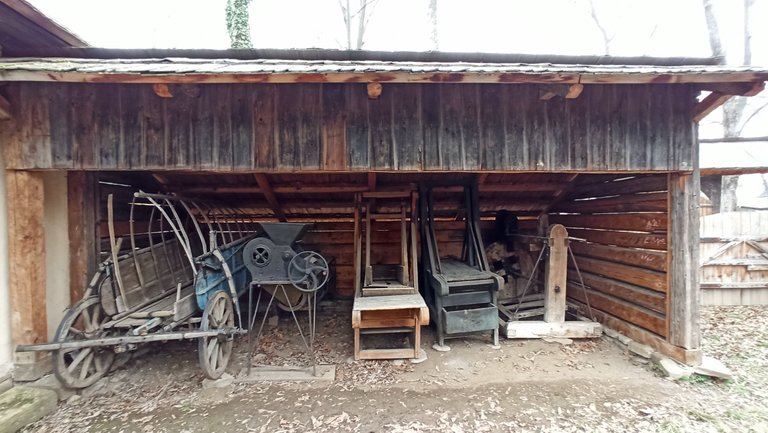
A kind of garage that existed before the invention of the car.
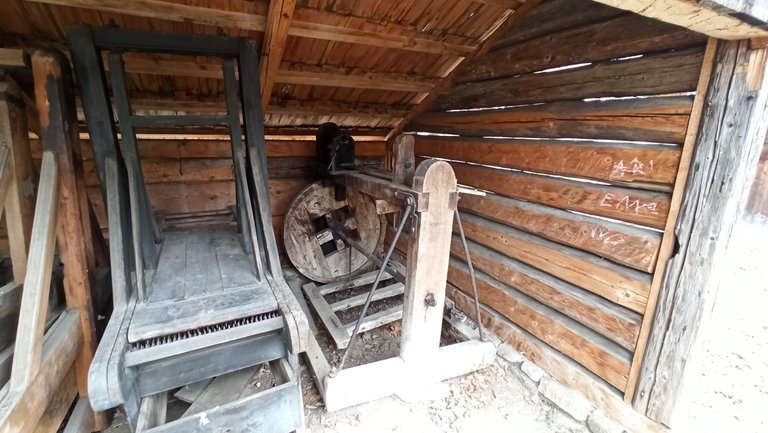
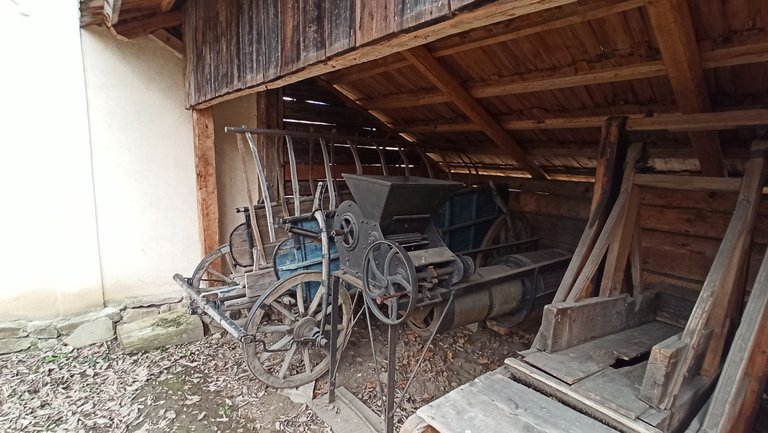
These machines were used to process animal feed and to transform sheep's wool into yarn for weaving. In those old days, everything that that family longed for was made in their own household.
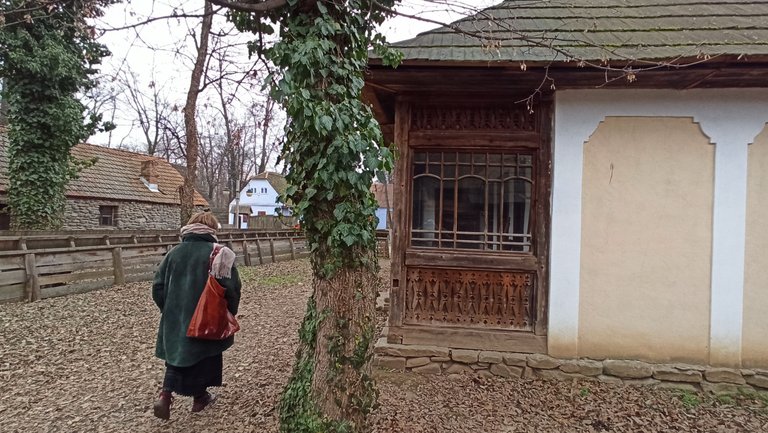
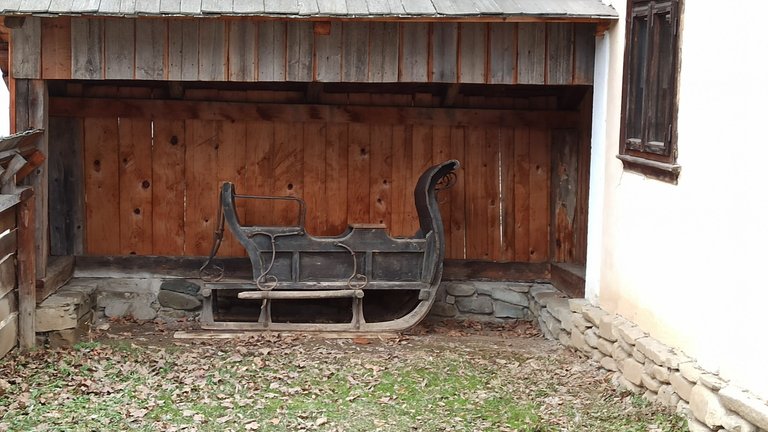
Although work, animal care, was the basic activity and occupies all the time, the peasants of those times had the wisdom to make room for a little relaxation. Such as sleigh rides, Bucovina being a northern and mountainous region. This house was built at an altitude of 1200 m where the winters were long and hard.
The work was hard and permanent, it lasted all day. Only Sunday was a day of rest and when all the villagers went to church.
Churh
A common denominator for all villages, the church! The church was the meeting place of the community, there is no one missing from the Sunday service. It played a major role in community development.
The churches, of course, are also different from an architectural point of view depending on the region where they were built. In the north of the country, especially in Maramures, the churches are made only of wood. At the Village Museum are exhibited two wooden churches, the only ones that could be dismantled and rebuilt here. The other churches, made of stone or brick, could not be rebuilt and exposed.
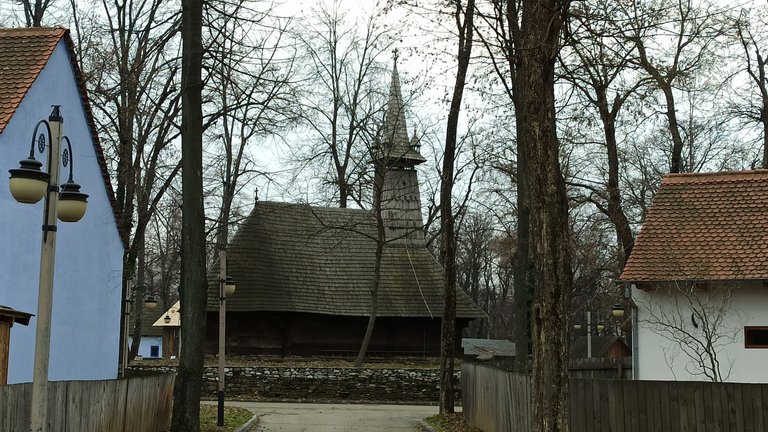
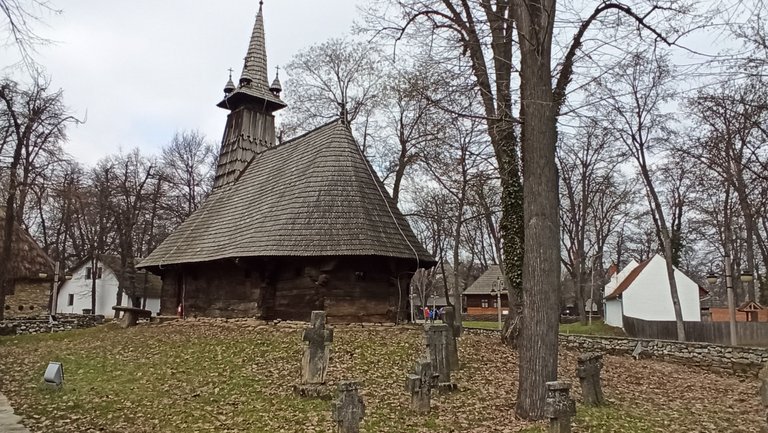
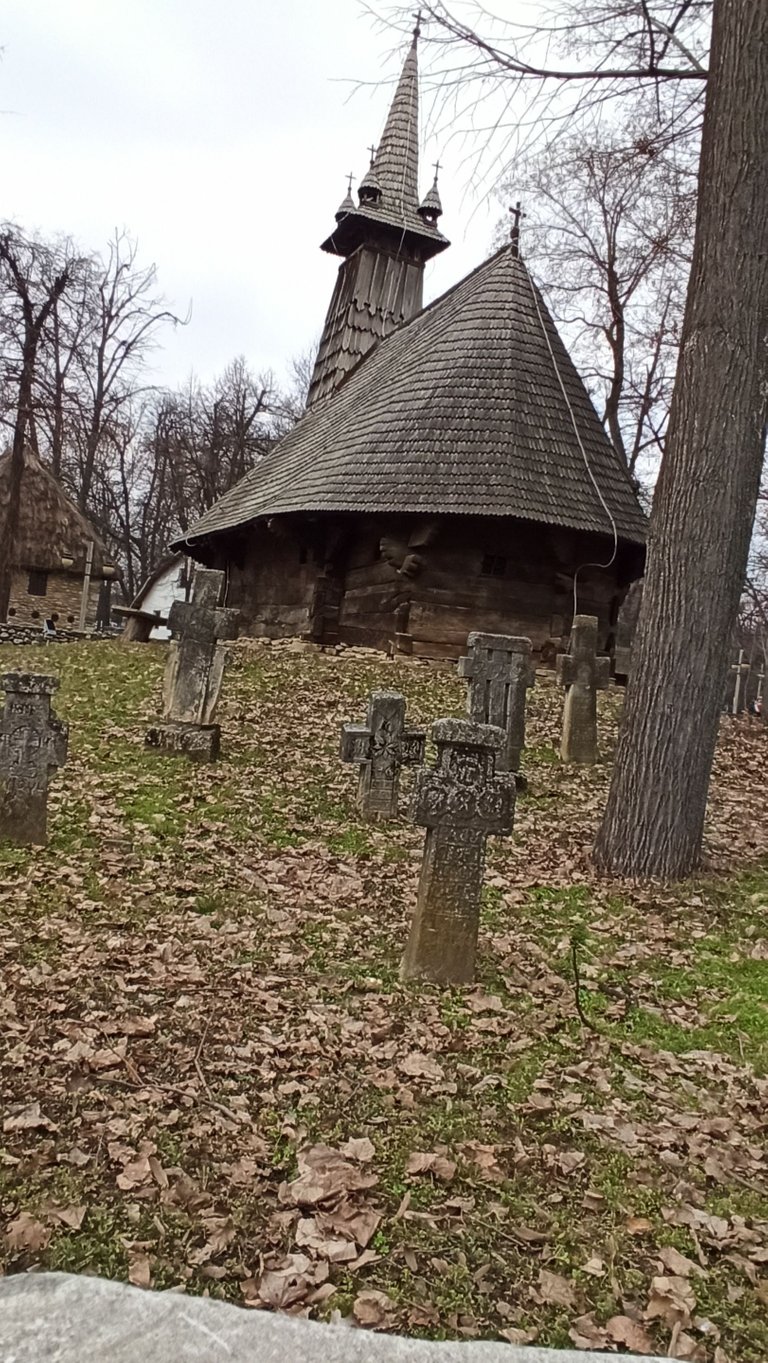
The dead were buried in the churchyard, here was the small cemetery of each village. One more reason for the community to gather there on Sunday. In addition, the priest was usually a learned man, who advised the parishioners and helped them with writing the various deeds, because most of the peasants were illiterate.
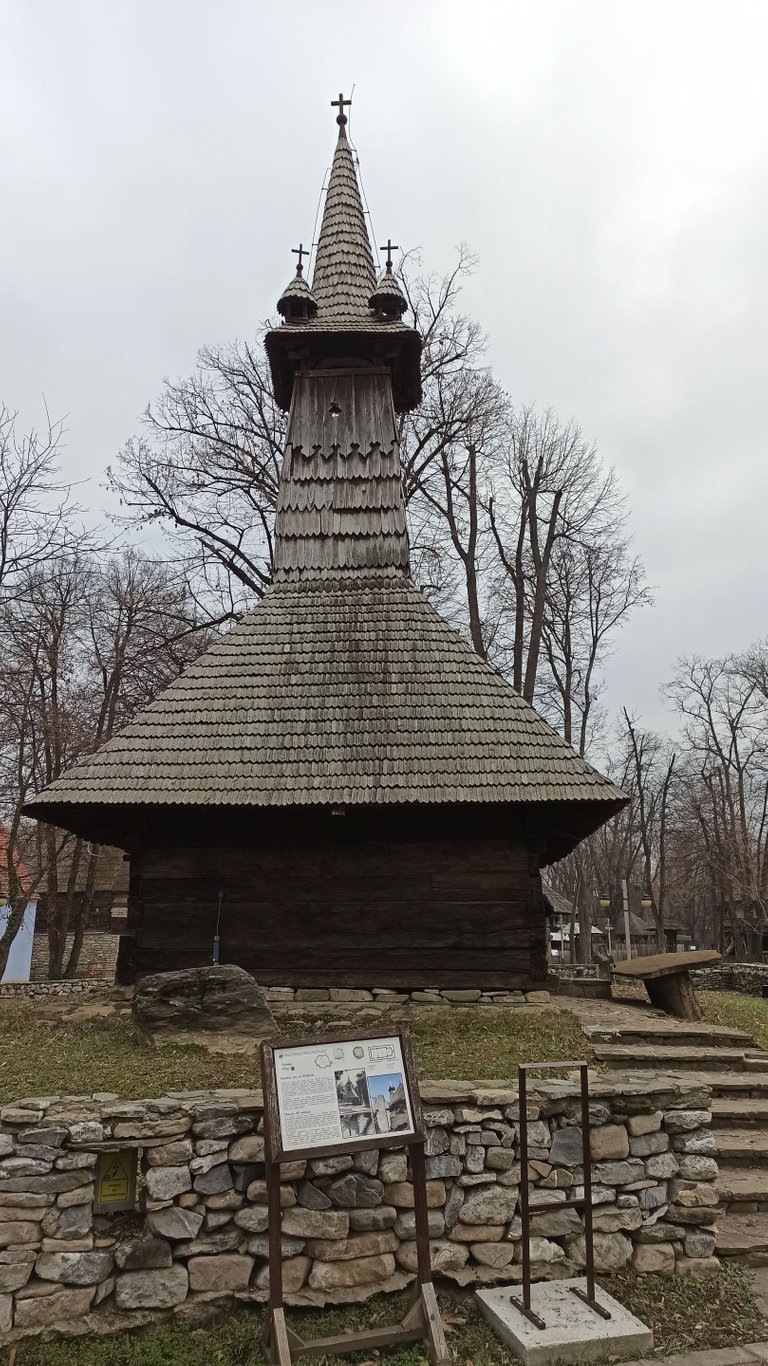
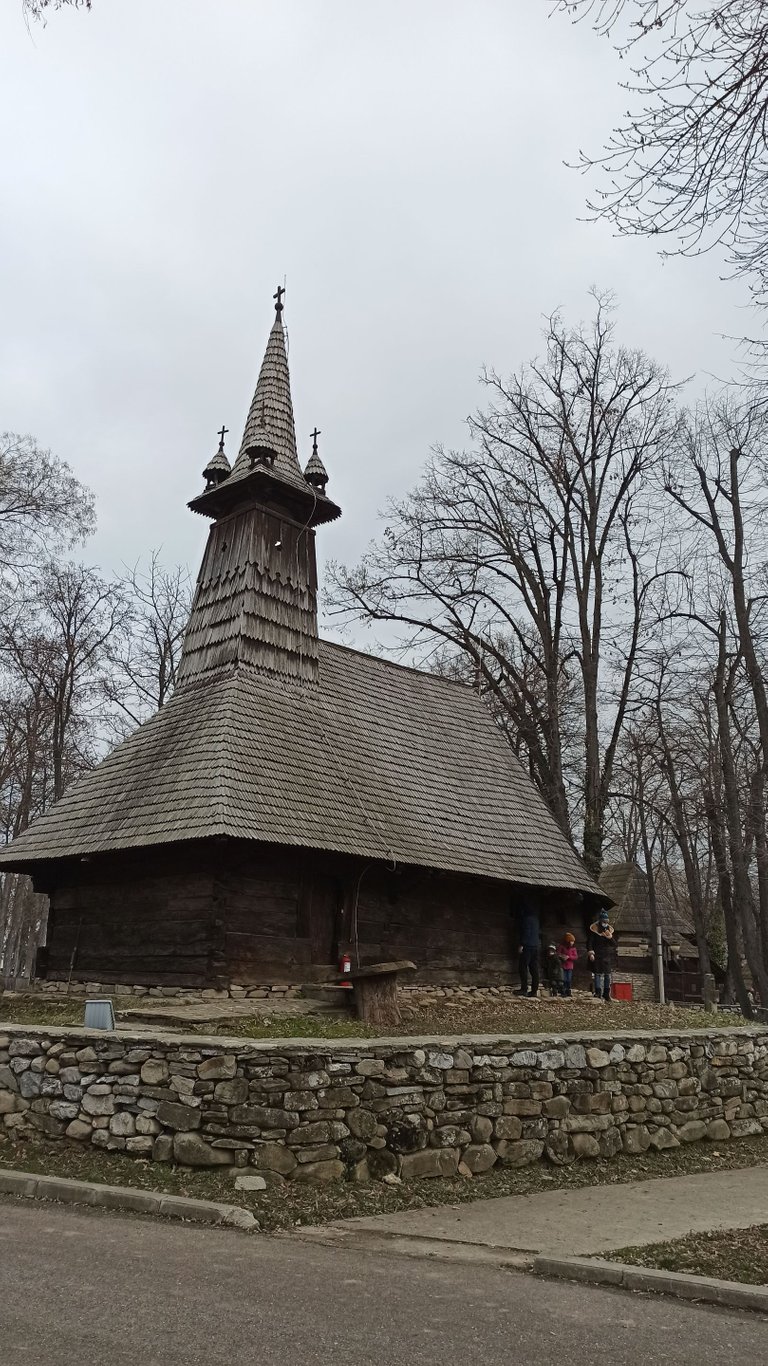
The materials used in the construction of the churches were similar to those used in the construction of the houses, ie wood and stone for the foundation.
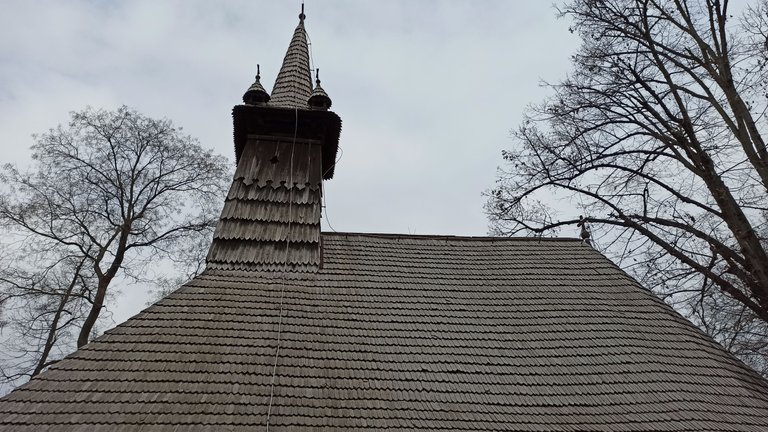
In fact, the architecture of the churches was similar to that of ordinary houses, in addition to being only a tall tower. This tower made a difference and individualized the church and was also used as a place of observation, being the tallest building in each village. In the tower is the bell, used to call people to Sunday service but also a way to let people know if something special is happening.

I presented two houses and a church in northern Romania, with specific architecture and construction. This museum is very large, although it is located in the middle of the city and there is much more to show. It remains for a future post to present other constructions specific to the rural area, the architecture may be naive but it gave birth to the villages that crossed centuries with these houses, so they passed the test of time.

https://twitter.com/danfree2011/status/1377627394576691205
I also visited this and it's absolutely gorgeous, a trip into the past
I'm glad to know that and that you agree that it is a good place for a time travel. Thank you!
You're welcome!
Excellent work of wood craftsmanship visibly seen from the dovetail joints. Thank you for taking us on an architectural tour of this beautiful village museum.
My pleasure! Thank you for reading.
awesome visuals, and the story. thanks for sharing!
Thanks for the appreciation!
It's truly remarkable to see massive architectural masterpieces like this village museum in a well-preserved condition! What's the most common variety of wood (tree type) used as the core building material in the construction of those historical houses and church @bluemoon?
Firwood is used in the construction of houses. It is easy to process and is found in abundance.
Okay I see. It makes a lot of sense to use local building materials in abundance. Thanks for the update!
With pleasure!
It is wonderful! At first glace it seemed like some vintage movie's set. The wooden details on the structures are commendable.
Keep posting:)
Thank you!
How interesting! First of all I need to appreciate that how clean and peaceful is that place. Liked the wooden indulgence everywhere. The virtual tour was amazing!
Thank you!
Hello @bluemoon, we are thrilled to congratulate you for being on the top spot!

The Architecture+Design Community is an Active Member of the OCD Communities Incubation Program
Find out more about the community comprehensive guidelines
Oh, thank you very much! This is a proof for me that this way of presenting architecture is also accepted and I am very happy for that.
Hi @bluemoon, your post has been upvoted by @bdcommunity courtesy of @rem-steem!
Support us by voting as a Hive Witness and/or by delegating HIVE POWER.
JOIN US ON
Thank you very much!
I always admire how well you put out a post, especially ones of historical value. You Chronicle it in such a way this is easy to understand and shows the value why things are done the way they were. Thank you so much for taking us through the village. Nobody Does it quite like you do and I am very happy to see you get rewarded for your hard work.
Hi, Dan!! @bluemoon. I hope you have a most wonderful weekend.
Hi, Denise! Always a pleasure to read your posts and comments. You only have the words ... but how beautiful. That's why everyone loves you here.
I meant to tell you that I read your comment on #MarketFriday and I know what I was going to say to you and I cannot remember if I answered you. Sorry!!!
If I didn't, I completely understand how Romania is with the camera stuck in the vendor's faces. I truly do and I am not at all put off by that. As a matter of fact, I applaud you for saying something to me so I would not think it was something I did. :)) It was very much like that in some parts of Russia. Just wanted to say I am sorry if I didn't respond to that!
No problem, Denise! I know that when you don't respond to a comment (as it happens to me quite often) there are reasons and nothing else personal.
My friends and I like to be honest, even if it can be harsh or unkind. I've only been doing this since I got older and I'm tired of saying only pleasant things and avoiding others. I believe that a true friend has to face truth, even an unpleasant one, coming from another friend. That's the only way we can help. Now I have a good friend in great trouble and I am very sorry that I did not warn him in the past years that he is making mistakes. Now it's too late and I feel guilty too.